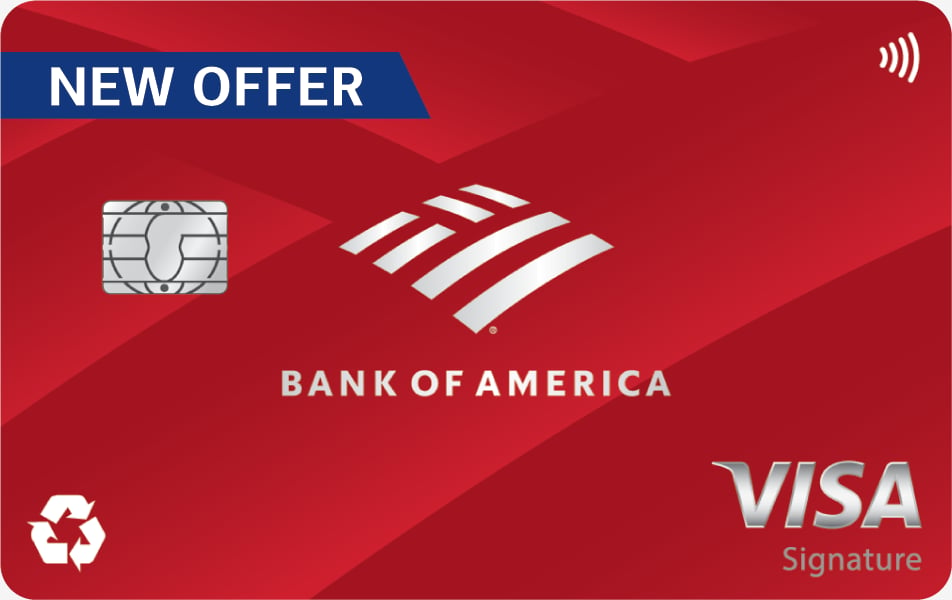My Credit Card Strategy: A Card for Every Case
"Assemble an arsenal of cards that give me a wide array of rewards and benefits with as little overlap as possible on reward categories and perks, so there's never any question about which card to use when."

Many or all of the products on this page are from partners who compensate us when you click to or take an action on their website, but this does not influence our evaluations or ratings. Our opinions are our own.
When people hear that I write about credit cards for a living, the first question they usually ask is, “What’s the best card out there on the market right now?” After I explain that there’s no one-size-fits-all card, the next question I hear is, “Well, what card do you use?” They always get a longer answer than they bargained for.
I carry eight credit cards. They come from four different issuers and offer a mix of travel points, cash back and merchant-specific rewards. Each has its pros and cons, but I select my cards carefully to serve my spending habits.
My overall strategy is to assemble an arsenal of cards that give me a wide array of rewards and benefits with as little overlap as possible on reward categories and perks, so there's never any question about which card to use when.
Admittedly, as a credit cards writer, I can get very excited about new offers — I do love a good sign-up bonus — and can be quick to apply for an outstanding new opportunity. But I maintain responsible habits and make sure that I never abuse my credit.
The cards in my wallet
Chase Freedom®: This was my first credit card, which I selected because of its good sign-up bonus, no annual fee and 5% cash back on rotating bonus categories. (You activate the categories, then get 5% back on up to $1,500 in spending per quarter and 1% on everything else.)
Chase Freedom Unlimited®: Another card with a nice sign-up bonus, I was attracted to the Chase Freedom Unlimited®’s relatively high cash-back rate of 5% on travel booked through Chase, 3% back on dining and drugstores and 1.5% back on all other purchases. Plus, it gives the ability to redeem those rewards as Chase Ultimate Rewards® points on other Chase cards.
Chase Sapphire Reserve®: I couldn’t resist this card’s massive sign-up bonus when it was first introduced. I redeemed it as $1,000 cash back, which helped me pay off my student loans! I’ve kept the card because I love the bonus points on eligible travel and dining, two of my biggest spending categories. While $795 is a lot to pay for an annual fee, I more than make up the cost in rewards and perks.
Southwest Rapid Rewards® Premier Credit Card: I’m a frequent Southwest flyer, so it made sense to apply for a credit card that would give me points toward my flights, especially since I got a hefty sign-up bonus of 50,000 Rapid Rewards points during a promotion a few years ago. (The current sign-up bonus: Limited Time Offer: Our best points offer this year, earn 100,000 bonus points after spending $4,000 on purchases in the first 5 months from account opening.)
Amazon Prime Rewards Visa Signature Card: As a relatively new convert to the Amazon Prime subscription service, I couldn’t resist earning an extra 5% back on my Amazon purchases plus a $70 Amazon gift card upon approval.
Ally CashBack Credit Card: I got this card because I have a savings account with Ally and wanted the opportunity to earn extra cash back by depositing my rewards into my savings.
Discover it® Cash Back: This card’s introductory APR period, rotating bonus categories and cash-back match for new cardholders — in addition to its high ratings on NerdWallet — were all appealing features that persuaded me to apply. (As with the Chase Freedom®, you activate the bonus categories, then get 5% back on up to $1,500 in spending per quarter and 1% on everything else.)
Wells Fargo Cash Wise Visa® card: I’m a longtime Wells Fargo customer, so when the Wells Fargo Cash Wise Visa® card card launched, I was eager to apply and earn the sign-up bonus it offered.
How I select my cards
I didn’t apply for any credit cards until after I graduated from college, since I didn’t want to be tempted by consumer debt at a time in my life when money was scarce. When I finally applied, I chose the Chase Freedom® because I knew I wanted a card with no annual fee that I could keep open for a long time, since the length of credit history is a component of your overall credit score.
I always try to have a card with a 0% introductory APR in effect at any given time so that if I need a little flexibility to make a big purchase, I can have extra time to pay off my balance. I always make sure to pay it in full before the introductory period is over, though!
Besides cash back, I also choose cards with unique or rare benefits. The Wells Fargo Cash Wise Visa® card, for example, offers cell phone insurance worth up to $600 as long as you use the card to pay your monthly bill. Or the Chase Sapphire Reserve®, which covers the cost of Global Entry, TSA Precheck or NEXUS and has an annual $300 credit for travel expenses — granted, that travel credit is a big reason behind the $795 annual fee.
Generally, I’m not a fan of co-branded cards — those that bear the name of a store, airline or other merchant in place of or in addition to the name of the issuing bank. Most of them have limited ways to earn and redeem rewards that don’t match the way I use cards. My exceptions are the Amazon Prime Rewards Visa Signature Card and the Southwest Rapid Rewards® Premier Credit Card, as both earn more at places where I consistently spend a lot of money. The Amazon card also earns 5% cash back at Whole Foods, which can really add up.
Personal strategies from our credit card writers |
• Chanelle Bessette: A Card for Every Case • Gregory Karp: Making Simplicity Rewarding • Melissa Lambarena: Two Cover the Bases and One’s on Deck • Robin Saks Frankel: Fund Summer Camp, Get 'Chase Trifecta' • Kimberly Palmer: Stretch the Budget With Cash Back • Claire Tsosie: I'm Disloyal, and It's Paying Off • Sara Rathner: Meet #TravelGoals Via Smart Swiping |
How I use my cards day to day
Juggling eight credit cards isn’t always easy; I have to stay very organized to keep track of balances, due dates and annual fees. But by being diligent about which cards I use when, I maximize my rewards on all my regular purchases.
For day-to-day spending, I choose cards to maximize cash back. People who crave simplicity often just go with a single cash-back card with a flat rate on everything, but I find that taking a little extra time to match a card to a category is worth it. A few extra points per purchase may not seem like much, but for every $1,000 you spend, it’s $20 or $30 more in your pocket. That adds up!
The cards I’m using the least at the moment are the Ally CashBack Credit Card, the Chase Freedom Unlimited® and the Wells Fargo Cash Wise Visa® card. I’m still in the promotional period with my Discover it® Cash Back card, which means that the rewards rate on everything in my first year will effectively be doubled. That beats the 1% to 1.5% cash back that the other cards offer on most purchases.
Once the promotional period on that Discover card is up, I’ll probably revert to using it just for the rotating 5% bonus categories and using one of the flat-rate cash-back cards for other purchases. I use the Ally card for gas and groceries, since those categories earn 2% back, the Wells Fargo Cash Wise Visa® card for my cell phone bill and the Chase Freedom Unlimited® for any random purchases that I want to earn 1.5% back on since I can redeem those rewards as Chase Ultimate Rewards® points in several ways.
As mentioned, two of my biggest spending categories are travel and dining, so I use my Chase Sapphire Reserve®, which gives me bonus points in those categories. Since I got that card, I’ve been using my Southwest Rapid Rewards® Premier Credit Card a bit less because the Chase Sapphire Reserve® has more flexible redemption options.
I’m able to multitask with my cards fairly well, but I imagine that there’s only so much I can keep track of. I don’t plan on closing my oldest card, but there’s a chance that I may close some of the lesser-used ones so I can devote my attention to new offers.
However, as long as I’m not being charged an annual fee, I’ll keep a card open. The longevity of each account bolsters the length of my credit history, which keeps my credit score in good shape — which makes me eligible for more great offers!
The information related to Wells Fargo Cash Wise Visa® card and Amazon Prime Rewards Visa Signature Card has been collected by NerdWallet and has not been reviewed or provided by the issuer or provider of this product or service.
Bank of America® Customized Cash Rewards credit card
Cash Back
Earn 6% cash back in the category of your choice – for the first year. Plus, get a $200 online cash rewards bonus offer!
Find the right credit card for you.
Whether you want to pay less interest or earn more rewards, the right card's out there. Just answer a few questions and we'll narrow the search for you.


